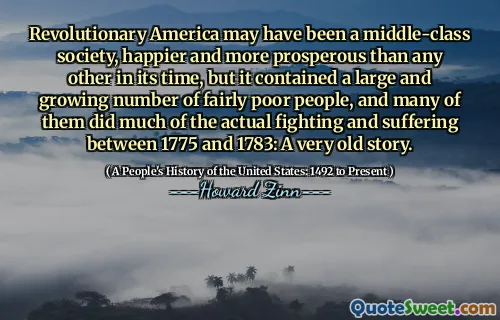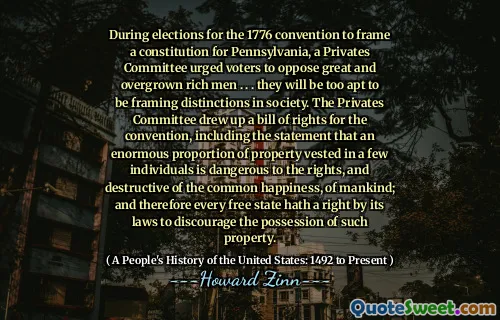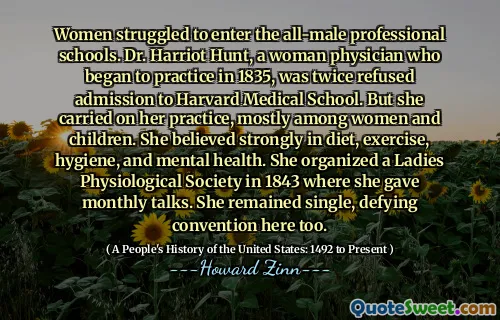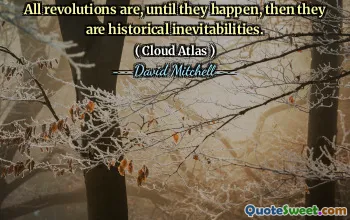
Revolutionary America may have been a middle-class society, happier and more prosperous than any other in its time, but it contained a large and growing number of fairly poor people, and many of them did much of the actual fighting and suffering between 1775 and 1783: A very old story.
This quote highlights the complex socio-economic realities of the American Revolution. While the narrative often celebrates the birth of a nation rooted in liberty and prosperity, it also brings to light the underlying disparities that persisted amid revolutionary fervor. The depiction of America as a relatively happy and prosperous middle-class society masks the significant number of impoverished individuals who played crucial roles in the fight for independence. Their suffering, labor, and sacrifices are often overshadowed by celebrated leaders and ideological triumphs. This acknowledgment forces us to consider the extent to which social inequality shaped the very foundation of the new nation. It challenges the simplistic idea that revolutionary ideals automatically led to an equitable society for all. Instead, it suggests a continuity of inequality—a pattern seen throughout history where the marginalized bear the brunt of societal upheavals, yet their struggles are often minimized or ignored in official histories. Reflecting on this history is vital for understanding the true cost of freedom and the importance of striving for justice and equality within the societal transformations. These nuanced truths remind us that revolutionary movements do not erase existing social disparities; they often expose and entrench them further unless deliberate efforts are made to promote inclusion and fairness. Recognizing the sacrifices of the impoverished majority encourages a more comprehensive view of history—one that values all contributions and acknowledges ongoing struggles for genuine equality.








